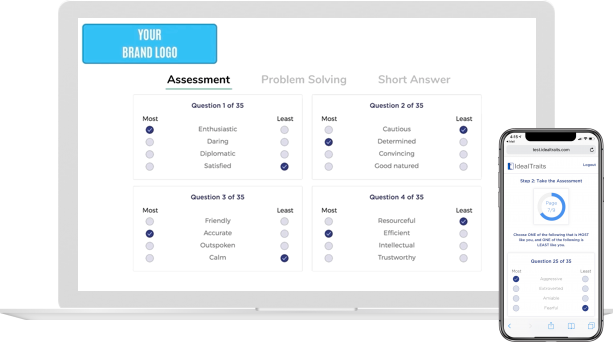Good Riddance: A Look Back At the Causes of Errors & Omissions Claims in 2020
Writer and philosopher George Santayana is remembered for the phrase, “Those who cannot remember the past are condemned to repeat it.” Given the current state of affairs—coming off 2020 and a solid year of pandemic peaks and re-peaks—those words ought to send chills up your spine.
By: Matthew Davis
Writer and philosopher George Santayana is remembered for the phrase, “Those who cannot remember the past are condemned to repeat it.” Given the current state of affairs—coming off 2020 and a solid year of pandemic peaks and re-peaks—those words ought to send chills up your spine.
For insurance professionals, the surest way to avoid future mistakes is to study past ones. So, how did E&O claims in 2020 differ from previous years, and what does that portend for 2021? Here’s a breakdown of what we saw: The claimant. This element of the agency errors & omissions equation was largely the same in 2020, with 90% of claims being made by agency customers and 2% the responsibility of carriers. Non-customer third parties made up the remaining 8%. Type of coverage. The relative split between the two broad categories of business—commercial and personal—is also static, with commercial lines consistently generating about 60% of all E&O claims and personal accounts generating the remaining 40%. Given the dissimilarities between the two broad categories, it’s not surprising the specific coverages involved in each are unique.
In order of frequency, the top five commercial lines E&O claims in 2020 were commercial general liability, commercial property, professional liability, auto, and business owner policies. The top five for personal lines were homeowners, auto, dwelling fire, crop, and farm owners. Auto claims are a real issue for both commercial and personal lines brokers. While it matters whether the owner of a vehicle is an individual or a business, some risks apply in either case. A customer is likely to cry foul if a loss is sustained that exceeds the limits, usually because there is no umbrella policy in place.
On the plus side, the frequency of auto claims has declined in both categories, likely a result of a significant drop in miles driven and premium rebates that have reduced incentives to switch carriers. 2021 is likely to be a different story as miles driven and rates go back up. While commercial property and commercial general liability claims have increased over the past year as a percentage of the whole, the actual count has been relatively stable.
Transaction type. More similarities appear between commercial and personal lines when it comes to the type of transaction the agency is processing. In order of frequency, the top five claims for commercial lines were renewals, new business (existing client), new business (new client), midterm change, and cancellation. The top five claims for personal lines were new business (new client), renewal, new business (existing client), midterm change, and cancellation.
In both categories, each of the top three loss drivers accounts for 20-30% of all claims, while midterm changes and cancellations generate another 10-16%, more so with personal lines. The most significant changes in 2020 are opposite sides of the same coin: renewal errors have increased while new business errors have declined.
Process step. In addition to analyzing transaction type, which looks at the timing of an error in the sale or servicing of a policy, it is important to identify the procedural step where errors occurred. In order of frequency, the top five steps where claims occurred in commercial lines were recommendation (type/limit), claims, application, renewal, and policy change. In personal lines, they were application, recommendation (type/limit), policy change, renewal, and issuance.
Claims only appear in the commercial lines list, but increased as a loss driver in 2020 in both categories. Application errors declined, while renewal errors went up across the board.
Error type. When looking at the nature of the failure, the top five, in order of frequency, for commercial lines were coverage not procured, failure to explain policy provisions, inaccurate information provided to the carrier, failure to recommend adequate value/limit, and failure to recommend coverage type.
For personal lines, the top five were coverage not procured, inaccurate information provided to the carrier, failure to explain policy provisions, failure to duplicate prior coverage, and failure to communicate the insurer’s requirements to the customer. In each case, failure to procure coverage accounts for about 30% of all claims, with the next highest barely reaching 10%. Noteworthy, however, are the movers in 2020. On the commercial side, claim adjustment errors and failure to recommend adequate values or limits went up around 2%. On the personal lines side, errors regarding timely notice of claims, procurement of coverage, and communicating the insurer’s requirements to the customer each went up more than 2% in 2020.
Matthew Davis is a vice president and claims manager at Swiss Re Corporate Solutions, working out of the office in Kansas City, Missouri. Insurance products underwritten by Westport Insurance Corporation, Kansas City, Missouri, a member of Swiss Re Corporate Solutions.
This article is intended to be used for general informational purposes only and is not to be relied upon or used for any particular purpose. Swiss Re shall not be held responsible in any way for, and specifically disclaims any liability arising out of or in any way connected to, reliance on or use of any of the information contained or referenced in this article. The information contained or referenced in this article is not intended to constitute and should not be considered legal, accounting, or professional advice, nor shall it serve as a substitute for the recipient obtaining such advice. The views expressed in this article do not necessarily represent the views of the Swiss Re Group (“Swiss Re”) and/or its subsidiaries and/or management and/or shareholders.
Copyright 2020 Swiss Re
Copyright © 2025, Big “I” Virtual University. All rights reserved. No part of this material may be used or reproduced in any manner without the prior written permission from Big “I” Virtual University. For further information, contact [email protected].









